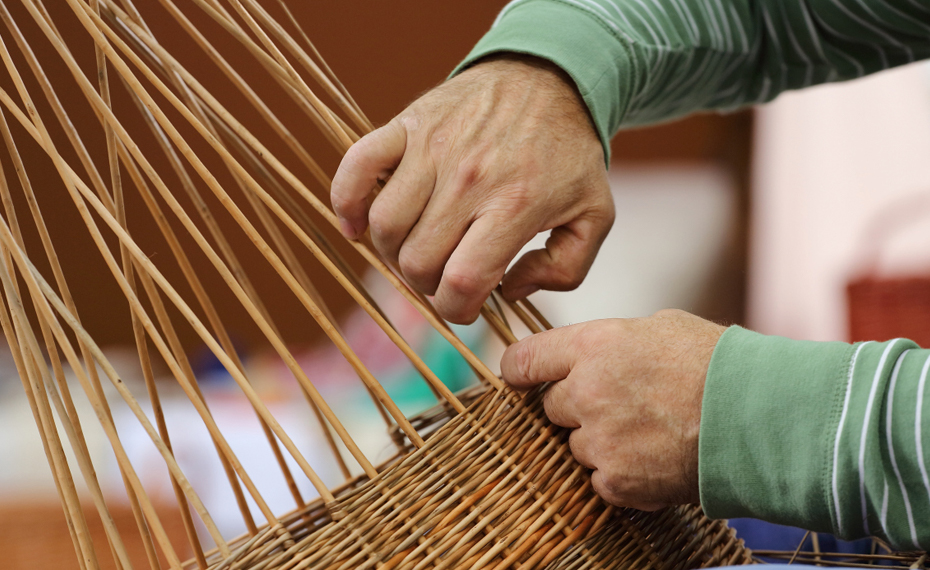Natural materials are the most harmonious materials with people and nature, and the products made by them have elegant and simple character, and the most affinity with people, and are one of the most enjoyable materials, especially the natural organic materials - bamboo and rattan.
What are natural materials?
They are often processed to improve performance, purity, and reduce regional deviations, as well as shape and quantity limitations. They can also be used for single-variety, high-volume products, while maintaining the character and integrity of the natural material, and can be better utilized by designers.
Natural woven materials. Rattan outer skin color and luster, smooth feel, excellent elasticity, like contempt but not contempt. It is also commonly used to make rattan lamps, rattan furniture and other daily utensils.
Rattan is produced in the old-growth forests, and is a tough, long rattan plant. Its outer skin is glossy, smooth to the touch, excellent elasticity, like contempt and not contempt, so called rattan contempt, is a good natural weaving materials. Tengchong people with this preparation of rattan chairs, rattan boxes and other daily utensils crafted exquisite, diverse, durable, and loved by consumers throughout the ages.

Bamboo is native to China, with many types, adaptable and extremely wide distribution. In China it is mainly distributed in the south, like Sichuan, Hunan, etc. They have allusions to the House of Panda and the Deep Bamboo Forest. There are a total of 70 genera and 1200 species worldwide, which are abundant in tropical, subtropical and temperate regions. China is one of the most bamboo-producing countries in the world, with 22 genera and more than 200 species, distributed all over the country, most in the Pearl River basin and the Yangtze River basin, with little rainfall and low temperatures north of the Qinling Mountains, where only a few dwarf bamboo species grow.
Bamboo is one of the forest resources. There are more than 70 genera and more than 1,200 species of bamboo plants in the world, mainly in tropical and subtropical areas, with a few species in temperate and cold zones. Bamboo is an evergreen (a few species deciduous in the dry season) shallow-rooted plant that is highly demanding and sensitive to thermal and water conditions, and the distribution of heat and water on the earth's surface governs the geographical distribution of bamboo. Southeast Asia is located in the tropics and south subtropics, and is influenced by the convergence of the Pacific and Indian Ocean monsoons, with abundant rainfall and stable heat, making it an ideal ecological environment for bamboo growth, and the center of the world's bamboo distribution. Bamboo often forms mixed forests with other tree species and is below the main forest layer, which was rarely appreciated in the past. When the upper forest layer is cut down, bamboo quickly reverts to a secondary bamboo forest with its fast growth and high fertility. With the expanding use of bamboo and its high economic value, people planted bamboo to form plantation forests. Secondary bamboo forests and plantation forests, in turn, spread and expand in all directions with its powerful underground stems.
Bamboo and rattan furniture is one of the oldest varieties of furniture in the world, and is made with great care, requiring polishing, varnish application, and even paint color to make the finished product appear strong and durable.

Characteristics of bamboo and rattan lighting techniques
The first step is to select and put the material. The selection of bamboo is very delicate, the bamboo age of one year or two years can not be used, at least to choose more than three years, and the best is the bamboo garden in the middle of the bamboo. A skilled craftsman can tell the age of bamboo by simply grabbing it with his hand and shaking it. After selecting the right bamboo, the material is placed according to the basic algorithm of "one foot and six inches" according to the type of product to be made.
The second step is to split the bamboo into gabions or gimlets. The bamboo is cleaned and the knots are flattened. The skill of splitting gabions is very important, as the hand and knife must form a line and the force of both hands must be balanced. Among the folk artists, there is a jingle that says, "Don't be too tall to split a gabion, one inch and three cuts. In the hands of the craftsmen, the thin bamboo sheets can be peeled in up to a dozen layers by using the techniques of biting, pulling and knifing. However, only three to four layers are used to weave household items, while six to eight layers are used to weave handicrafts. Gomer picking is done by using a picking knife, holding the bamboo piece in the left hand to press the gabion and pulling it back with the right hand to make the gabion or gabion as wide or narrow as possible. Once the gabions are picked, the next step is to scrape the gabions. The artist uses a scraper to scrape the gabions smoothly and evenly, and to make round gabions, flat gabions, and gabions. In order to prevent moths and mildew, the gabions are also cooked. The split gabions are boiled in a pot and then dried out for use.
The third step is to weave. There are many weaving techniques and a lot of content. The master gabionist uses various weaving techniques such as vertical warp and weft weaving, hexagonal hexagonal weaving, triangular eye weaving, tiger head eye weaving, multilateral money eye weaving, corner three-dimensional weaving, gyratory restoration weaving, embellishment decoration weaving and so on. During the weaving process, the gabions or gimlets are bleached and dyed. It can be bleached first and then woven, or woven first and then bleached; it can be dyed first and then woven, or woven first and then dyed. Finally, the bamboo craft is dried and sprayed with lacquer, at which point it is considered complete.

Bamboo and rattan lamps and lanterns why the popular market and what are the factors?
Bamboo and rattan furniture fresh and elegant, smooth lines and with the natural aroma of the earth, quietly into the city people's homes, playful home market.
Fresh and natural rustic atmosphere
Bamboo and rattan materials smooth and meticulous, with natural texture, giving a fresh and elegant, natural and simple, but also with a faint rustic atmosphere. Rattan furniture is comfortable and natural, warm and quiet. Bamboo and rattan furniture is durable, fresh and natural, back to basics, bringing a new natural enjoyment to the home.
Environmentally friendly and green
Bamboo and rattan are natural materials, green and non-polluting, with a short growth cycle, high yield, all renewable, without affecting the ecology. Bamboo and rattan furniture in the processing process using special adhesives, will not be harmful to health, conducive to the home environment. The waste material produced in the process can be directly burned and used as organic fertilizer.
Novelty and Variety of Styles
Bamboo and rattan have tight structure, light weight and flexibility. Rattan is soft when wet, tough when dry, extremely flexible, and can be bent and shaped at will. Rattan can also be used to weave various patterns around the main skeleton of the furniture, and can be used with other materials to make its shape more unique. Designers in the design of furniture style from traditional styles and ergonomic principles, the use of computers to design a variety of European, rustic, Chinese and other multi-style integration of furniture, so that people from the body and mind to get greater satisfaction, to meet the taste of modern fashion home people.

Bamboo and rattan material lamps and lanterns maintenance methods
1. You can use a brush or vacuum cleaner to clean the rattan furniture.
2. Usually, you can use a damp cloth and a soft detergent to scrub the bamboo and rattan material furniture.
3. Bamboo and rattan furniture for a long time if there is a buildup of dirt, it is best to scrub with salt water, not only to remove dirt, but also to make the rattan soft and flexible.
4. bamboo rattan material lamps and lanterns should not be placed next to the heating pipe, its bonding parts will dry and become weak due to heat.
5. Rattan lamps and lanterns to avoid direct sunlight, to prevent the rattan material fading, dry.
As one of the best woven rattan lamps manufacturers in China, we specialize in manufacturing a wide variety of bamboo and rattan lamps made of natural materials. With high quality OEM/ODM services,, and can provide custom lighting services in different sizes, materials and colors to meet your customized needs.
If you are looking for a supplier of unique decorative lights, you have found it! XINSANXING Lighting has been providing custom services and lighting products to lighting dealers, online stores and lighting solution companies.
We look forward to discussing ideas with you. Please feel free to contact me.
Email: hzsx@xsxlight.com
Post time: Aug-08-2022





